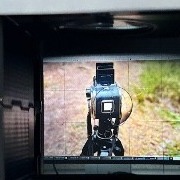Medium Format 6x6 vs MM
-
Recently Browsing 0 members
- No registered users viewing this page.
-
Similar Content
-
- 3,143 replies
- 298,994 views
-
- 4 replies
- 1,015 views
-
- 12 replies
- 598 views
-
- 4 replies
- 400 views
-
- 16 replies
- 4,705 views
-



Recommended Posts
Join the conversation
You can post now and register later. If you have an account, sign in now to post with your account.
Note: Your post will require moderator approval before it will be visible.